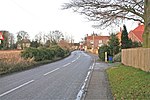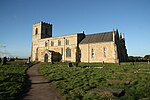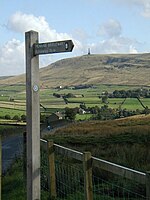Beal, North Yorkshire
Civil parishes in North YorkshireSelby DistrictUse British English from March 2015Villages in North Yorkshire

Beal is a village and civil parish in North Yorkshire, England. It is situated on the River Aire, 3.5 miles (6 km) north-east of Knottingley, 8 miles (13 km) south-west of Selby, and 21 miles (34 km) south of York. The parish includes the village of Kellingley, and borders the City of Wakefield in West Yorkshire. At the 2001 census it had a population of 720, increasing to 738 at the 2011 census.
Excerpt from the Wikipedia article Beal, North Yorkshire (License: CC BY-SA 3.0, Authors, Images).Beal, North Yorkshire
Marsh Lane,
Geographical coordinates (GPS) Address Nearby Places Show on map
Geographical coordinates (GPS)
| Latitude | Longitude |
|---|---|
| N 53.723 ° | E -1.194 ° |
Address
The Kings Arms
Marsh Lane
DN14 0SL
England, United Kingdom
Open on Google Maps











